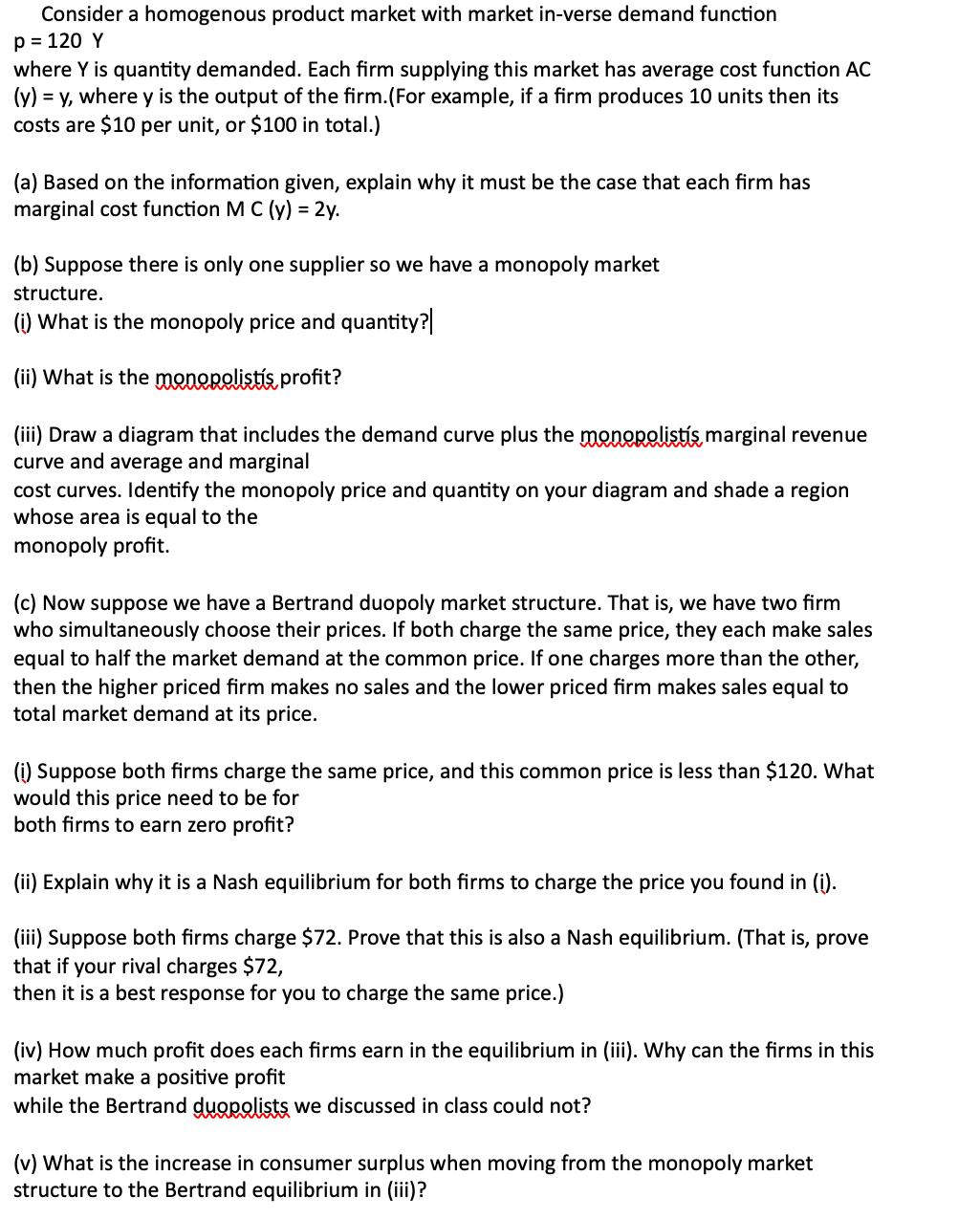Answered step by step
Verified Expert Solution
Question
1 Approved Answer
Consider a homogenous product market with market in-verse demand function p = 120 Y where Y is quantity demanded. Each firm supplying this market

Consider a homogenous product market with market in-verse demand function p = 120 Y where Y is quantity demanded. Each firm supplying this market has average cost function AC (y) =y, where y is the output of the firm. (For example, if a firm produces 10 units then its costs are $10 per unit, or $100 in total.) (a) Based on the information given, explain why it must be the case that each firm has marginal cost function M C (y) = 2y. (b) Suppose there is only one supplier so we have a monopoly market structure. (i) What is the monopoly price and quantity? (ii) What is the monopolists profit? (iii) Draw a diagram that includes the demand curve plus the monopolists, marginal revenue curve and average and marginal cost curves. Identify the monopoly price and quantity on your diagram and shade a region whose area is equal to the monopoly profit. (c) Now suppose we have a Bertrand duopoly market structure. That is, we have two firm who simultaneously choose their prices. If both charge the same price, they each make sales equal to half the market demand at the common price. If one charges more than the other, then the higher priced firm makes no sales and the lower priced firm makes sales equal to total market demand at its price. (i) Suppose both firms charge the same price, and this common price is less than $120. What would this price need to be for both firms to earn zero profit? (ii) Explain why it is a Nash equilibrium for both firms to charge the price you found in (i). (iii) Suppose both firms charge $72. Prove that this is also a Nash equilibrium. (That is, prove that if your rival charges $72, then it is a best response for you to charge the same price.) (iv) How much profit does each firms earn in the equilibrium in (iii). Why can the firms in this market make a positive profit while the Bertrand duopolists we discussed in class could not? (v) What is the increase in consumer surplus when moving from the monopoly market structure to the Bertrand equilibrium in (iii)?
Step by Step Solution
★★★★★
3.42 Rating (155 Votes )
There are 3 Steps involved in it
Step: 1
The image contains a set of economics questions related to market structures specifically monopoly and Bertrand duopoly markets The questions ask for explanations about firms marginal cost functions b...
Get Instant Access to Expert-Tailored Solutions
See step-by-step solutions with expert insights and AI powered tools for academic success
Step: 2

Step: 3

Ace Your Homework with AI
Get the answers you need in no time with our AI-driven, step-by-step assistance
Get Started


